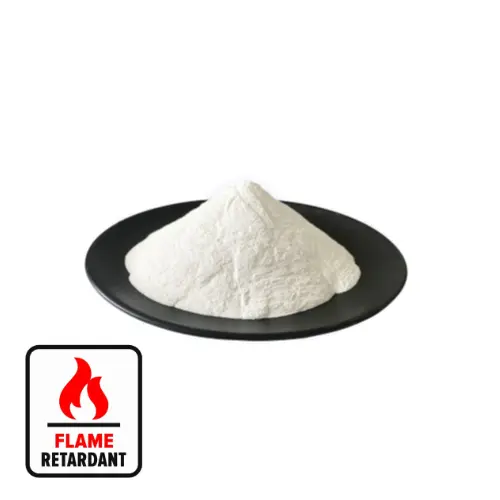Hebei Messi Biology Co., Ltd. stated that magnesium hydroxide flame retardant is a new type of filling flame retardant. It releases bound water when decomposed by heat and absorbs a large amount of latent heat to reduce the surface temperature of the synthetic material it fills in the flame. It has the effect of inhibiting the decomposition of polymers and cooling the generated combustible gases.

When magnesium hydroxide is heated (340-490 degrees), it decomposes and absorbs the heat on the surface of the burning material to achieve flame retardant effect; at the same time, it releases a large amount of water to dilute the oxygen on the surface of the burning material. The active magnesium oxide generated by the decomposition adheres to the surface of the combustible material and further prevents the combustion. Magnesium hydroxide not only does not produce any harmful substances during the entire flame retardant process, but its decomposition products can also absorb a large amount of harmful gases and smoke generated by the combustion of polymers such as rubber and plastics while being flame retardant. The active magnesium oxide continuously absorbs the incompletely burned molten residues, which quickly stops the combustion while eliminating smoke and preventing molten droplets. It is an emerging environmentally friendly inorganic flame retardant.
On the basis of magnesium hydroxide surface treatment technology, a full set of imported grinding production lines were introduced, and the unique formula modified magnesium hydroxide was further developed, which can improve dispersibility while enhancing its compatibility with polymer matrix, improve processing performance, and improve the comprehensive performance of the product. It is a domestic first.
As a halogen-free flame retardant, magnesium hydroxide is superior to aluminum hydroxide. Its hardness is lower than that of aluminum hydroxide, and it causes less wear on equipment during processing; the thermal decomposition temperature of magnesium hydroxide is as high as 340~390℃ (aluminum hydroxide is 200℃), and the hot melt temperature is as high as 1.37KJ/g (aluminum hydroxide is 1.17KJ/g). Magnesium hydroxide flame retardant composite materials can withstand higher processing temperatures; the flame retardant effect is good, and the smoke suppression effect is better than aluminum hydroxide; magnesium hydroxide also has the effect of promoting polymer carbonization; the price is also 10~30% lower than aluminum hydroxide.
